- News
- Reviews
- Bikes
- Accessories
- Accessories - misc
- Computer mounts
- Bags
- Bar ends
- Bike bags & cases
- Bottle cages
- Bottles
- Cameras
- Car racks
- Child seats
- Computers
- Glasses
- GPS units
- Helmets
- Lights - front
- Lights - rear
- Lights - sets
- Locks
- Mirrors
- Mudguards
- Racks
- Pumps & CO2 inflators
- Puncture kits
- Reflectives
- Smart watches
- Stands and racks
- Trailers
- Clothing
- Components
- Bar tape & grips
- Bottom brackets
- Brake & gear cables
- Brake & STI levers
- Brake pads & spares
- Brakes
- Cassettes & freewheels
- Chains
- Chainsets & chainrings
- Derailleurs - front
- Derailleurs - rear
- Forks
- Gear levers & shifters
- Groupsets
- Handlebars & extensions
- Headsets
- Hubs
- Inner tubes
- Pedals
- Quick releases & skewers
- Saddles
- Seatposts
- Stems
- Wheels
- Tyres
- Health, fitness and nutrition
- Tools and workshop
- Miscellaneous
- Buyers Guides
- Features
- Forum
- Recommends
- Podcast
feature
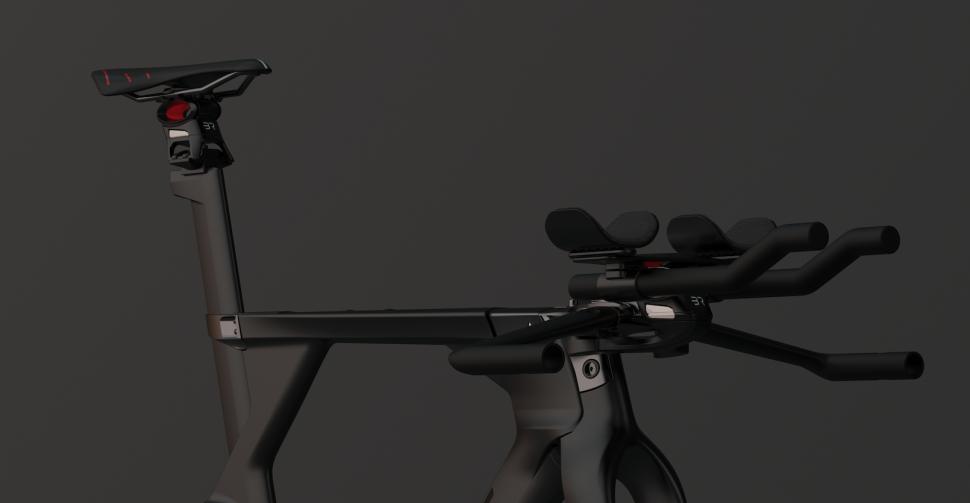 2021 Body Rocket 2
2021 Body Rocket 2Aero for the masses? Body Rocket's system offers cyclists real-time drag measurements without a wind tunnel
Aero data tech developer Body Rocket has designed a device that provides real-time drag measurement for cyclists. The three-part sensor system can be attached to the bike for live "wind tunnel accurate" data. Body Rocket says that this brings aerodynamic measurement to the masses and empowers riders to be in control of their own CdA (coefficient of aerodynamic drag) through their body position.
We spoke to Body Rocket founder Eric DeGolier—a design engineer who has previously worked for Trek Bicycles, PowerTap and CycleOps—to find out more about the innovative aero measuring device.
“Power readings were available in the 1980s by going to the lab and hopping onto a Monark ergometer, but it didn’t become a powerful metric until you could gather it all the time. We want to do the same with real-time drag force measurements,” DeGolier explains.
“What we have done is looked at how wind tunnels work and put together a system that in essence replicates what is going on in a wind tunnel but in a real-world setting.
“When we were designing this, we had to look at the real problem here. The problem is that the rider is very different from what a wind tunnel is designed for—we are all shaped differently and change when we are riding.”
Is this going to be as big a game-changer as the arrival of off-the-shelf power meters? Body Rocket certainly thinks so…
Why do we want real-time aero measurements?
Your body accounts for a huge proportion of total system (rider plus bike/equipment) drag—Body Rocket reckons about 80%—and this device gives you CdA readings in real-time so you can see how your body position affects that figure. In short, the idea is that it measures how efficient you are aerodynamically, and allows you to make changes based on that.
This is an untapped metric where significant improvements can be made for performance gains, because, let’s be realistic, even if you know what your perfect aero position is, are you holding it for the duration of your event?
Body Rocket says that its technology provides an accurate picture of your body’s drag with data constantly collected over a period of time in a range of different wind conditions. The drag measuring metric, CdA, recorded by Body Rocket’s on-board sensors, can be seen live as you ride, as well as afterwards for analysis. All other things being equal, the lower the CdA number, the faster you will go.
This data can be analysed against the length of the ride to reveal fatigue in holding a position, for example, or against the elevation profile to determine if improvements can be made when the road ramps up or slopes down.
> Why riders like you need to get more aero and wheel weight doesn't matter
DeGolier says: “If you’re making changes to your body and equipment, such as a skinsuit or helmet, this will be measured and be quantifiable in the same way that they would be in a wind tunnel.
“But it will be over the course of a ride so you look at changes and understand if your position is shifting because fatigue is setting in, or if you need a different balance between your power output and your aerodynamics because you are on a hilly course instead of a flat course.”
Being able to have instant readings displayed as you ride enables you to experiment and discover a position that produces a low reading, and gives you confidence in the value of holding that (probably slightly burning) tuck on the bike.
With data highlighting any upper body weakness in holding an aerodynamic position across the full duration of your event, doing core body strength training on the side can be quantified with real improvements in your CdA numbers on the bike. Without this the two types of training can seem worlds apart, and therefore arm day is more easily neglected.
How accurate is Body Rocket’s onboard aero tech compared with a wind tunnel?
Body Rocket says that its patented aero system directly measures drag force, which is what differentiates it from competitors and makes this technology an exciting development.
DeGolier says: “The alternative systems on the market use a method called Virtual Elevation which takes your power numbers and from there you know how much energy you are putting out. It has to make some estimates about all the other energy losses in the system. That’s rolling resistance and drive train losses. It also assumes that your body weight stays constant, but this does vary over the course of a long event. Only when getting all those guesses right, what is left is your correct CdA.
> Using the Velocomp AeroPod: does the device that promises drag measurement on the fly deliver?
“We are isolating the rider from the bike and looking at just the body,” DeGolier says.
Body Rocket says this is how rolling resistance and drive train friction are completely removed from the equation.
Body Rocket completed its testing in collaboration with the University of Southampton and its wind tunnel to determine the accuracy of its device.
DeGolier says: “As we are doing the same type of measurement, the actual direct measurement of force, this is the only type of device that you can take into a wind tunnel and measure directly against it.
"Other devices rely on back-calculating from a power measurement, and since power is entirely unrelated to wind speed in a wind tunnel all they can do is check to make sure their wind speed measurement equals the wind tunnel.
“Over the range of different positions we tested with our device, the average variation between the wind tunnel testing and the results of our device was 0.3%.”
How do the sensors work?
Each sensor in the Body Rocket system is measuring both horizontal and vertical force.
Starting with the vertical measurement, DeGolier explains: “The sum of vertical forces from all of the sensors is equal to your weight. Think of it like putting one foot on each of two different bathroom scales. You can change what each scale is reading by shifting your weight back and forth but the two will always add up to your total weight.”
He adds that the same principle is applied to the horizontal forces, but with a slight difference.
“When you’re just sitting on your bike, or pedalling on a turbo for example, all the horizontal forces sum to zero. It’s only when you add an external force, like someone pushing on you or blowing a fan across you (and creating a drag force), that the horizontal measurements add up to something other than zero. On a flat road that’s a direct measure of your drag force."
DeGolier says: “We’re taking advantage of the physics principle that for every force there is an equal and opposite force.
“Another way to think of it is to say we’re measuring how hard your bike is pushing you through the wind, which is exactly equal to how hard the wind is pushing on you (i.e. your drag force).”
With virtual elevation methods, which other devices use, DeGolier says that it’s necessary to solve this equation:
CdA Coefficient of drag
W Watts (as measured by a power meter)
Cde Coefficient of drivetrain efficiency
Crr Coefficient of rolling resistance
mb Mass of bike
mr Mass of rider
g Gravity
v Velocity of bike
s Slope
a Acceleration
ρ Air density
va Velocity of wind relative to bike
He explains: “With virtual elevation methods you start with a measure from a power meter and need to make guesses for coefficient of rolling resistance (Crr), coefficient of drivetrain efficiency (Cde), and mass of rider (Mr).
DeGolier says that the mass of the rider can change during a ride and drivetrain efficiency can vary by up to 5% of total power use and is affected by things like the gear combination, the power being transferred, wear over time and the cleanliness of the system. Similarly, rolling resistance can vary by up to 10% and is affected by the choice of tyre, inflation pressure, wear and the road surface.
"This can be mitigated by choosing a test course with consistent pavement surface, careful attention to inflation pressure, and test protocols that vary in speed enough to separate the linear response of rolling resistance from the exponential response of wind velocity, but doing so limits the devices to testing scenarios and significantly increases the time required to get results," says DeGolier.
“But by directly measuring drag force we don’t need to monitor power, we can simply calculate the equation below, where we have a direct measurement for each variable.”
F is the horizontal force measured by a direct force drag meter.
Will there be any help interpreting this new metric?
This data is presented to you in real-time and is available after you finish your session for further scrutiny, but how can it be fully understood and used?
Body Rocket says the device works like buying an off-the-shelf power meter in that it won’t come complete with advice. But the brand admits that as aerodynamics is a pretty unknown area of expertise for many, it will branch out to provide some assistance in the form of training up aerodynamic specialists.
“Eventually we want to provide a coaching academy to train coaches to understand the nuances of aerodynamics so they can work with athletes to improve those numbers,” says Body Rocket Head of Marketing Amy Kilpin.
In the short term, the device will allow you to experiment with your riding position and find what works and what doesn’t.
How easy is it to use?
Body Rocket’s full system consists of three sensors: one underneath the saddle, the other a standard stem fitting, and the final one being integrated into specific pedals – for which Body Rocket are also developing their own proprietary power pedal technology.
These sensors connect with Garmin computers (thanks to the Connect IQ system) to provide feedback on your real-time aerodynamic position on the bike. Body Rocket is in discussion with other cycle computer manufacturers to support its sensors so that aerodynamic data can be displayed on all head units.
The Body Rocket system will have to be calibrated each ride, as you would with a power meter. With a background in power meters himself, working with PowerTap in the early 2000s, DeGolier asserted: “The technology is very, very similar underneath it.”
Will readings be comparable from one ride to the next? “Yes, that’s our expectation,” DeGolier says. “We still need to prove that part out, but we have every reason to believe that we would have absolute and comparable numbers.”
First expected to roll out as an aftermarket product (not integrated on to a complete bike), the three-part system can be in theory be swapped between different bikes.
“There may be some subtle offsets between bikes because of the way the air interacts,” DeGolier says, “You’d have to reset your baseline when the device is swapped between bikes.”
How else can the product be used?
As well as selling the device directly to consumers, Kilpin added: “We aim to offer licensing opportunities for bike manufacturers who want to integrate the Body Rocket system into their models to sell as a complete package.
“Along the same lines, a company developing aerodynamics products can license the technology to conduct their own testing.”
Yorkshire based clothing brand Dessus has already made use of Body Rocket’s technology to test the aero claims of its new Aero.21 zipless jersey out on the road, as we reported earlier this month.
“The thinking behind using this tech rather than a traditional wind tunnel is that if kit is designed to be raced on the road then it should be tested as such; races are won and lost on the road,” Dessus says.
When is it arriving?
The Body Rocket system is expected to come to market towards the end of this year, after hitting a hurdle in 2020.
DeGolier said: “When we went into the wind tunnel we had developed the full system, but unfortunately the sensor in the pedals wasn’t capable of accurately tracking the angle that your foot is at—which is very important for our measurements.
“We ended up using an external vision system to track this and we calculated the total drag forces from that. But this would obviously keep us from ever going out into the real world, so most of 2020 was spent redesigning the technology at the pedals.
“Now we have the revised pedals installed on the bike we are going through the final steps of integrating this into our data and validating it in the lab setting.”
From here, Body Rocket plans to refine and perfect the accuracy of its device on BMC bikes, with outdoor testing taking place at Preston Park velodrome near the Brighton coast.
> BMC partner with real-time aero data tech developers Body Rocket
Roads have inclines and descents, and with this aerodynamic drag alters, and so inclinations have to be taken into account in the brand’s testing for a precise end product.
The Sussex track has undulations which are said to make it a perfect testing environment.
“Conducting all of our testing on BMC bikes creates consistency and effective testing, and forging this partnership can also help us integrate the technology in the future,” Kilpin notes.
Body Rocket will make it possible to get drag data out on the road, but it will come at a premium when it launches. £1499 to 1999 is the envisaged unit price, although a power meter will be included.
When you're making your buying decisions, you might be tempted to go for something substantial and aesthetically pleasing, like some deep-section wheels, over a virtually hidden aero device, but Body Rocket hope that the potential performance gains will win you over.
Would you be willing to pay for CdA measurement or do you reckon you’d still be tempted to splash the cash on aero bling instead? Let us know in the comments below...
Latest Comments
- HLaB 5 min 7 sec ago
I hope the video/ plates are clear enough so the police can take action!
- MichaelWinnerRIP 11 min ago
I'm not sure Sussex Police is correct. This subject was covered recently by the Black Belt Barrister on YouTube and he was clear that, in a public...
- brooksby 21 min 33 sec ago
Except that the Tories want to defund it because they think it is biased AGAINST them.
- brooksby 24 min 3 sec ago
So even the market for bikes which don't can't ever leave the house is tanking?
- momove 33 min 11 sec ago
As a public body, they are....
- mitsky 43 min 49 sec ago
Intersting article in The Spectator advocating drivers who have a dashcam to "snitch" on littering/flytipping by other drivers....
- mitsky 44 min 53 sec ago
Intersting article in The Spectator advocating drivers who have a dashcam to "snitch" on littering/flytipping by other drivers....
- mitsky 45 min 8 sec ago
Intersting article in The Spectator advocating drivers who have a dashcam to "snitch" on littering/flytipping by other drivers....
- Rendel Harris 1 hour 46 min ago
May not be in her manifesto but she has frequently said in interviews that she will remove any cycle lane that impedes traffic flow - obviously a...
- andystow 2 hours 8 min ago
My granny started driving before driving tests were implemented. When they were, she was grandfathered (grandmothered?) in, and she ticked all the...

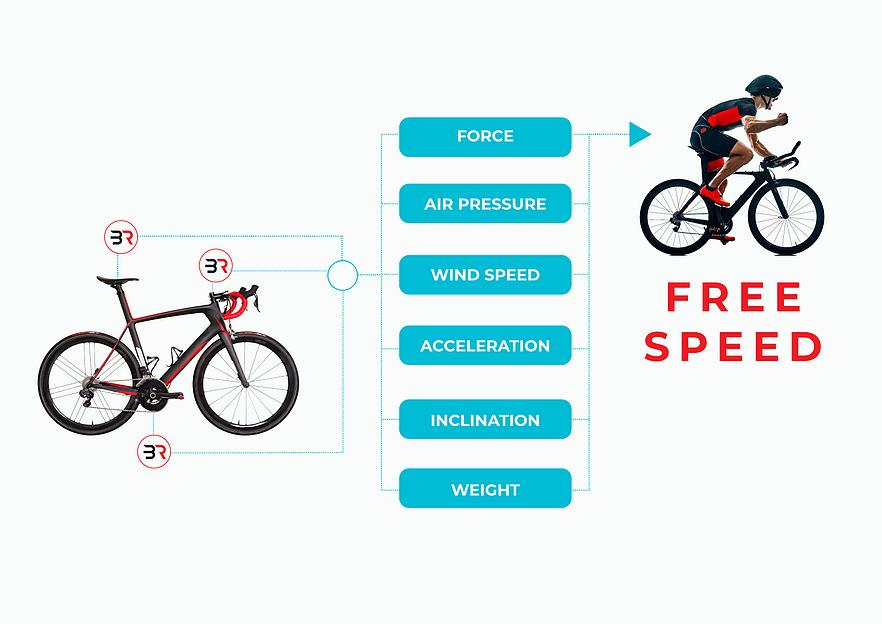


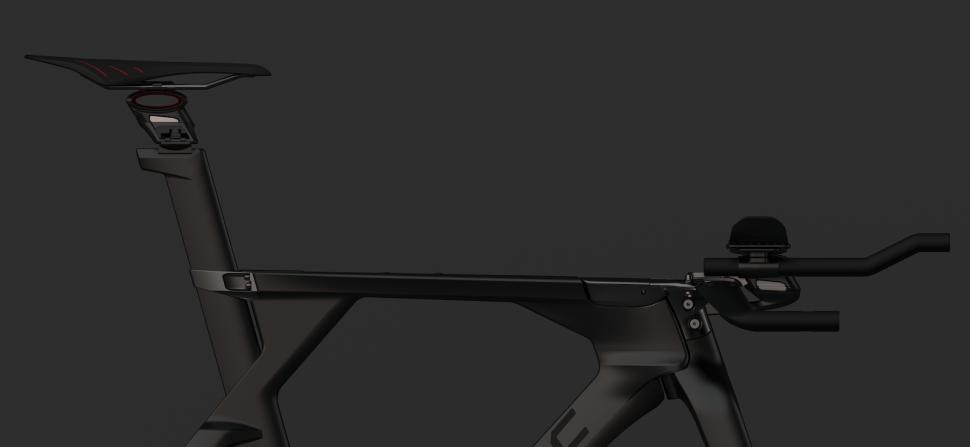
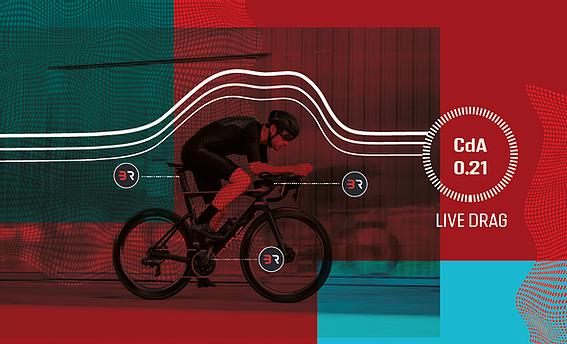
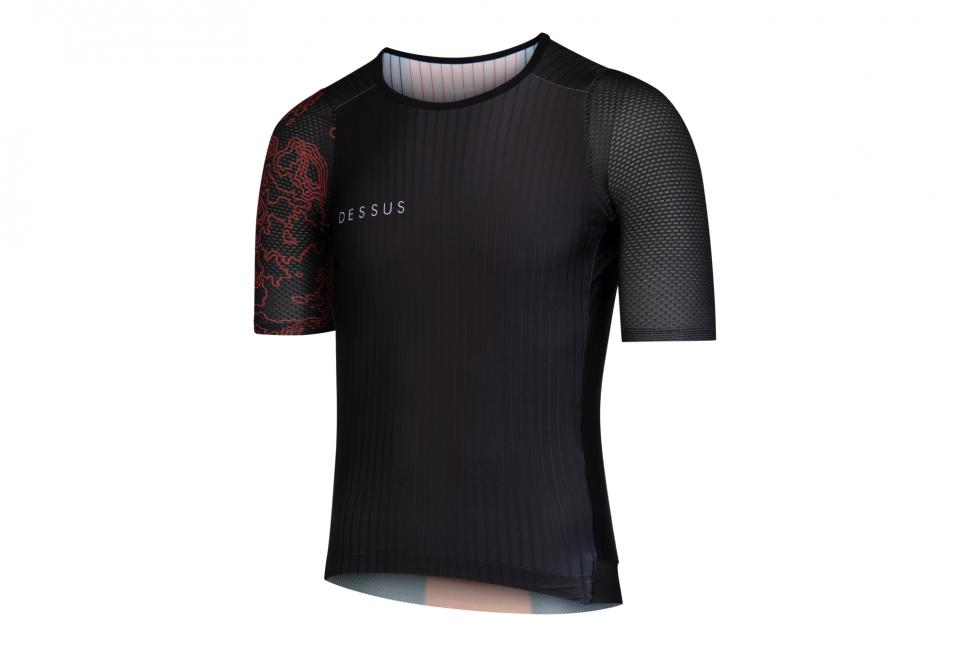
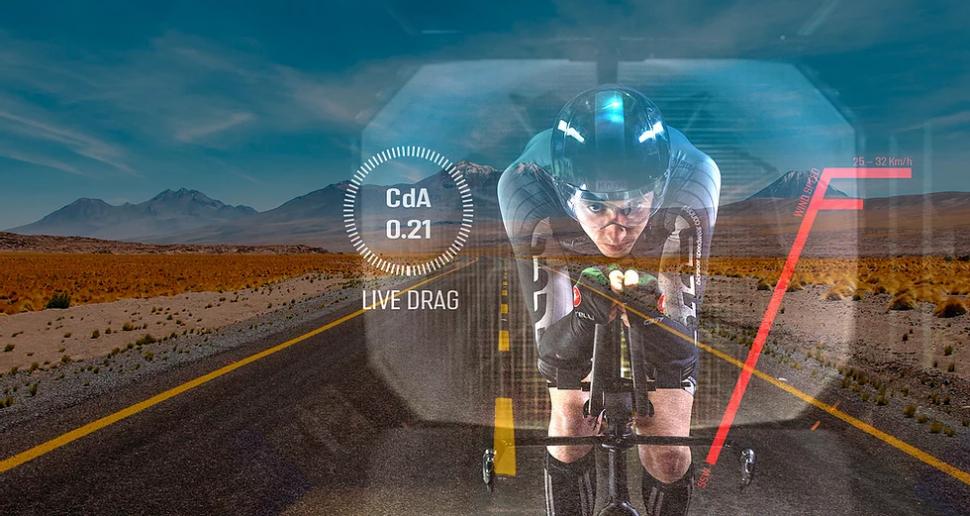
Add new comment
14 comments
Best wishes to Body Rocket! Real-time CdA is a tough nut to crack. Post hoc analysis is a much easier problem.
Aero for the masses? - £1499 to £1999
Wouldn't it be cheaper/easier to compare the readings from a Powerpod airspeed 'powermeter' and a traditional powermeter - wouldn't this give a measure of how aero your position is?
Cheaper - maybe. Easier? Maybe not. The airspeed gadget has such a pile of assumptions and calibration built in, I'm not convinced by that.
It is certainly cheaper than a wind tunnel though. And remember how much the first power meter was when it came out?
I think there to many veriabels in the real world to make this usefull The difference in wind speed or direction will give you off reading. I think this is a useless gimick..
If I understood it right, the system is basically a set of very sensitive balances at each of the contact points. One of the difficulties in implementing it was highlighted in the article - a lot of force goes to the pedals and a very fast and accurate pedal angle sensor is needed to determine the horizontal and vertical components correctly. The second challenge, which the article does not address, is that the system also needs to incorporate an extremely precise inclinometer to tease out what part of the forces is air drag and what is gravitational drag, as the balances themselves cannot do it.
Just how precise must this inclinometer be? Well, most practical questions one would wish to explore with this system, such as 'is helmet A less draggy than helmet B', require a precision in the determination of CdA of the order of 0.01 m2 or better. Now, simple physics tells me that to achieve a precision of 0.01 in the determination of CdA at 10 m/s (36 km/h, 22 mph) the inclinometer must have a sensitivity of 0.05 degrees!
And that is just one of the sources of error the system has to deal with. Thus I do not hold my breadth for this product. I wish I were mistaken. It would be great if good aero data could be had with such a minimalist setup.
*edited for typos
I agree. I was thinking while reading this about how, practically, you'd use this information. For example, if you want to compare your riding position with a very slightly modified riding position, you'd need a very accurate drag measurement, but also you'd need to test this on the same road surface, with the same wind conditions, etc., which sounds difficult.
Not difficult at all. I'm riding down my favourite long descent, I look at my number. I tuck my elbows in further, number goes down. I unzip my jacket, number goes up.
I think this is a promising approach. It is measuring the forces that are pushing against you, so starts from a logical position.
On the pedal position sensor - 100 rpm is not an especially high frequency for a rotary encoder. This one will run up to 3000 rpm. Miniaturising it and synchronising the signal with the other devices might be challenging though.
https://www.robotshop.com/uk/rotary-encoder-5000-p-r-3-channel-6mm-npn.html?gclid=Cj0KCQiAj9iBBhCJARIsAE9qRtC-1DD_ULaTcYhswmIYxY5R2kWle3AWJhIRQxJsMsWaa-nYUNux3HQaAmapEALw_wcB
I don't see a claimed precision on the site (please someone correct me if I am wrong) although they do make an accuracy claim. However, an iPhone clinometer app claims to do 0.1 degrees. With two at opposite ends of the bike, then 0.05 might be achievable, especially as you would be looking at billions of data points over the ride, rather than an instantaneous measurement.
I wonder how much difference bending the bike makes? Again, averaging across stem and seatpost might take some of that angle variation out.
However, the fact that we are speculating on whether it can measure tiny differences between aero helmets misses the fact that it will be mostly body position that makes a real world measurable difference. It probably will be able to recognise when you look down and point your aero fin up like a sail. My guess is it could be a useful guide for body position.
Good points. Unfortunately, having two clinometers does not double the accuracy. It's more of a bell type function, two is little better than one.
Consumer-grade solid state clinometers may *claim* to be accurate up to 0.1 degrees but one must have a sense of what is possible in the absence of the controlled environment of a laboratory. It's just a genuinely hard problem to make a system based on this principle work in practice. I will give another example to make this clearer. The recent kerfuffle around the UCI's banning of the top tube tuck and the phantom bars had the side benefit of exposing to a wider audience the work done by university research groups on the differences between different styles of aerotuck. It turns out that the differences are quite subtle, often only 0.02 or 0.03 m2 between distinct aerotuck styles. In other words, the system reported here would hardly be able detect a difference between these quite distinct styles while depending on a 0.1 degree accurate clinometer, even if it could by hypothesis be perfectly calibrated, which it can't, and there were no other sources of error to contend with, which there are.
For the angle, we are looking at the precision rather than the accuracy to detect differences. Standard deviation of the mean is essentially 1/rootN times standard deviation of the observation, for N observations. So for two measurements the deviation is reduced by a factor of about 0.7. We could do some more stats on the repeat measurements taken over a short period of time.
Sitting on the top tube would completely mess up the calculation though, as now we have forces which are not being measured- the rider will appear to have suddenly got much lighter for example.
I'd be interested to see the calculation you did to derive the required accuracy- I don't have the necessary constants for air density to hand.
A difference of 0.01 m^2 in drag area is actually quite large. At 40 km/h, a difference of 0.01 m^2 is equivalent to about 8 watts, and if you're flirting with 20 minutes for a 10 miler, 0.01 m^2 is equivalent to about 14 watts (whence the rule of thumb that at racing speeds, a difference of 0.01 m^2 is about equivalent to 10 watts). To determine whether different helmets or skin suits or small changes in hand position would be consequential, you'd want estimates that are much more reliable.
Agree completely. However, that's not what we were discussing. What I said is that this novel system will struggle to detect a difference of 0.01 m2 in CdA on the basis of the alleged (physical) principle of operation.
Having said that, I genuinely hope they prove me wrong and pull it off.
Sorry, my comment wasn't clear. I meant that existing methods can do 0.01 m^2, because that's not particularly hard. Some existing methods can do much better than that. I think the best I've seen from field testing out on a road course (admittedly, with an experienced rider under very good conditions so that's not typical) using virtual elevation was a sd of 0.0006 m^2 (on a baseline measurement of ~0.20 m^2, so a CV of 0.3%). But that wasn't real-time, which is a much harder problem to solve; that was after downloading the data from the test runs and doing post hoc analysis. That's about what we see in an indoor velodrome using "near" real-time estimation, but that's a much more controlled environment so is quite a bit easier.
I realise now that you must be Robert Chung, creator of the eponymous field aerodrag testing method. I read your introduction to the method as well as articles by others and found it fascinating. Cheers!